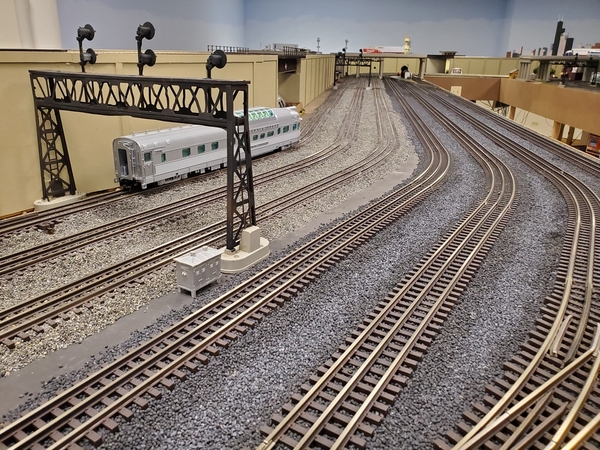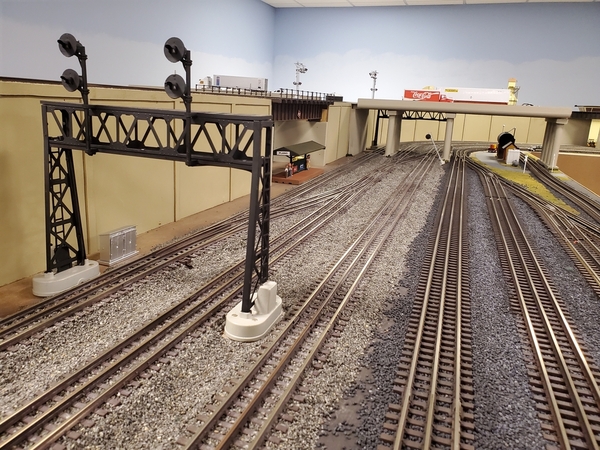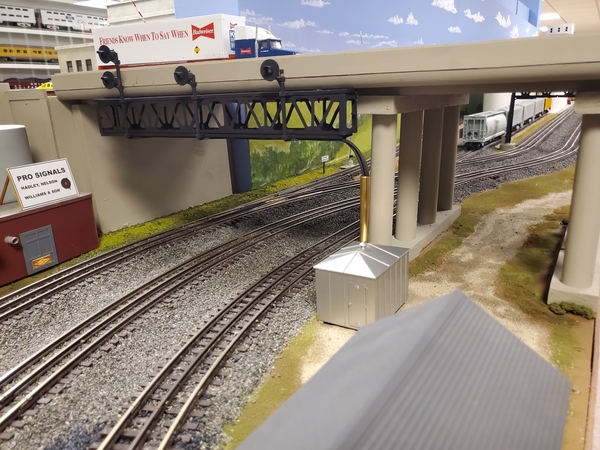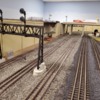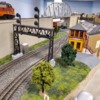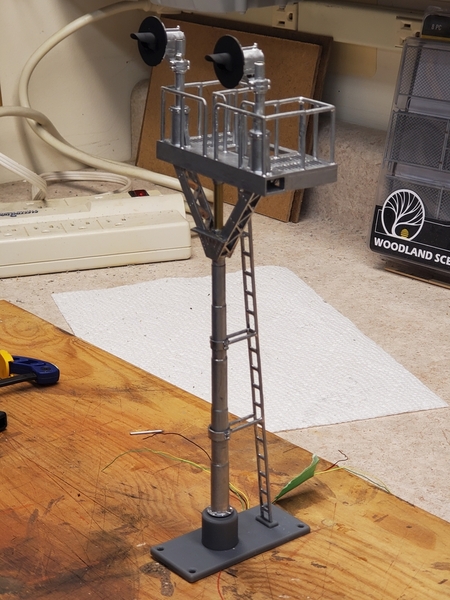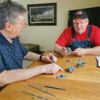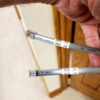Very satisfying when everything works as planned Art.
I'm curious about the Atlas system. Is it all plug and play or do you have to program a master controller to tell the other boards what to do?
Bob
I agree Bob. You don't mind doing all the work if it pays off.
The Atlas system is self contained, you do not need any additional controllers. It is as plug and play as you can get. For basic signaling where you would just indicate occupancy for one direction of travel, all you need are Atlas signal boards. You separate the layout into blocks, cut gaps in an outside rail (3-rail), attach indicator wires from the track to the signal boards, power the boards, and run cables connecting the boards together and watch the magic.
If you are running bi-directional, you have to add a complete system going the other way and link them together. It's not more difficult, but it does add to the time required and the expense as you are doubling everything.
To get to the next level, which is indicating which way all your mainline turnouts are thrown requires the addition of the Atlas Interlocking boards to the mix. In addition to everything already described, you connect wires from your switch machines to the Atlas interlocking boards and then connect the interlocking boards to the signal boards in what I call a signal board cluster.
None of these steps are complicated, but to be successful you must be able to think through everything in advance, layout a diagram with everything clearly marked, label everything, and methodically follow your plan. It's a little like the old cliché "how do you eat an elephant, one bite at a time."
Another great feature about this is that you don't have to do it all at once. You can break it into pieces many different ways. Do one direction first, add the other later. Add the turnout control later, it just layers on top of what you have already done. Or another approach could be to totally do one section of the layout at a time. And you need to decide what do you really want to accomplish? If you are going to be normally running trains alone you may not need or want the turnout controls? If you aren't planning to actual run trains by the signals, only use the signals in highly visible areas where they will be seen most often and easily.
Sorry for the long answer, I'll try to answer any questions or get the answer from one of our team members that knows.
Art





